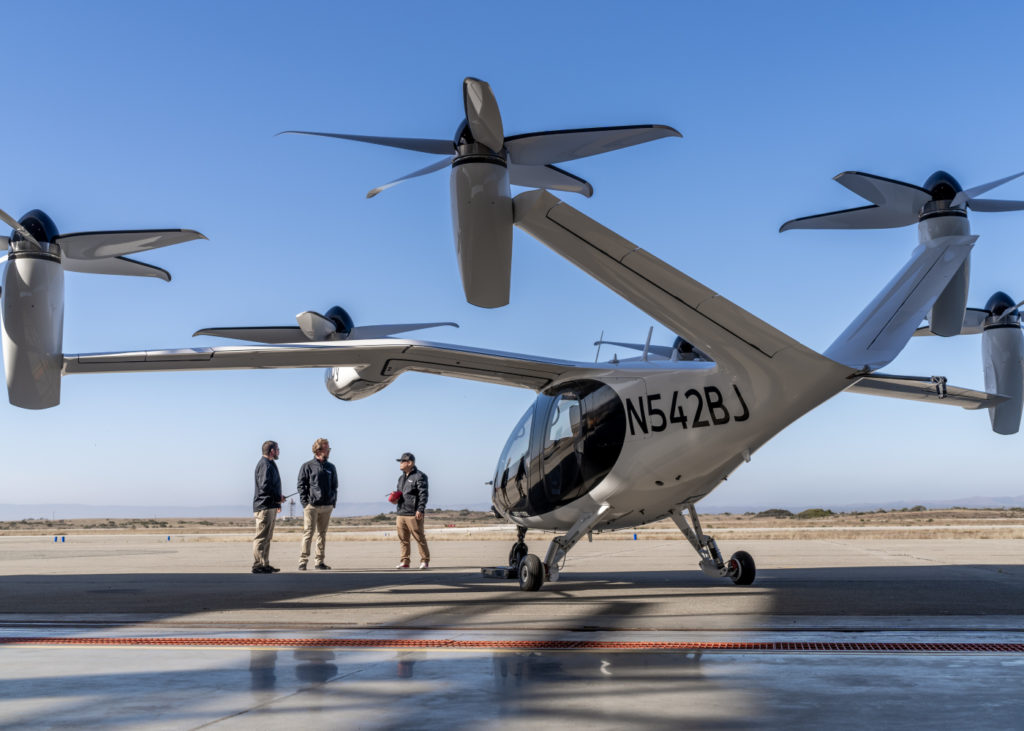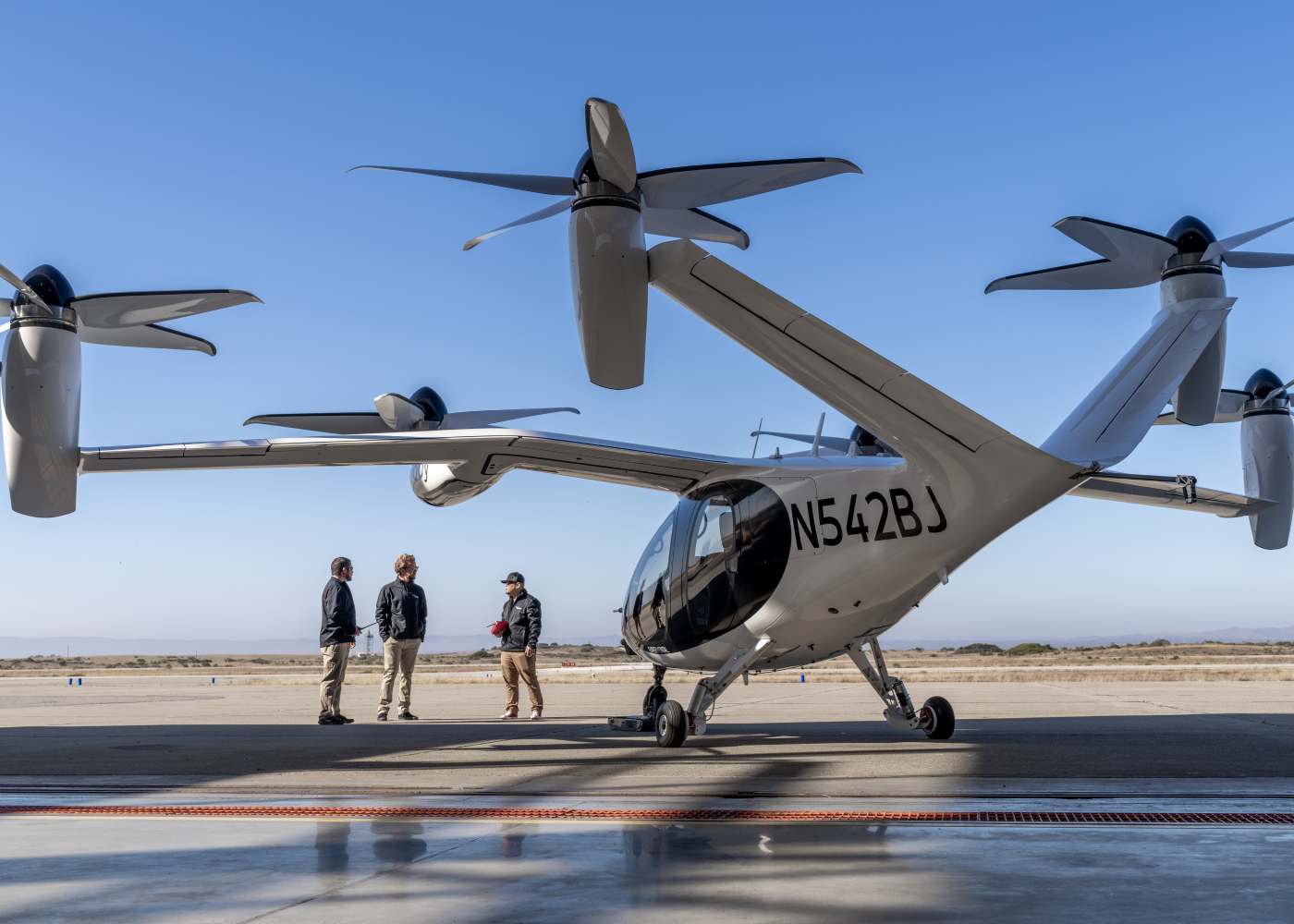Joby Aviation has pushed back the targeted launch of commercial passenger service with its first eVTOL aircraft to 2025.

The company is citing rule changes from the U.S. Federal Aviation Administration (FAA) affecting the certification timeline, as well as internal factors impacting aircraft manufacturing.
“I’m genuinely thrilled with the progress we’re making and the momentum our team has on certification,” said Joby CEO JoeBen Bevirt in a third-quarter earnings call on Nov. 2. “But I don’t want to understate the amount of work ahead of us, and the impact of the changes the FAA announced earlier this year.”
Joby originally believed it would certify its first production aircraft with FAA Part 2117A, a path that would not have required any new or modified rulemaking on the operational side, Bevirt said.
These new or modified rules are known as special federal aviation regulations (SFARS). But the FAA has since advised it will be certifying the aircraft under Part 2117B, and will require SFARS to be in place.
The FAA also advised it does not expect these SFARS will be finalized until late 2024, pushing back Joby’s certification timeline, as well as the launch of commercial passenger service.
“We’re very grateful for the FAA’s leadership in this nascent sector, and we’re in close contact with them on the process for drafting and finalizing the SFAR requirements,” Bevirt said. “We have good visibility on it, and we’re preparing to quickly incorporate any new requirements that come out of it into the aircraft.”
Joby also cited “internal reasons” for delaying its commercial passenger service launch, which include staffing issues.
“There’s the challenge of having the right team in the right place at the right time,” Bevirt said. “We’ve done a lot of work to anticipate the growth required in our team, adding a number of key members and groups as necessary … but there are still areas where we have gaps to fill.”
Another critical part of certification is translating prototype designs into certifiable parts, he said.
“We’ve made significant investments in this capability in terms of people, equipment, and processes,” Bevirt said. “While these have been critical investments that are producing great results, the learning curve on manufacturing processes has been steeper than originally anticipated. Certifying novel technologies like ours is a complex process, and we’re under no illusion that these will be the last challenges we face. But I do believe that Joby is uniquely positioned to navigate these challenges, whether internal or external.”
Despite these setbacks, Bevirt said the company is now on the “firmest foundation we’ve ever had, and we understand the certification path with the FAA more clearly than ever.”
“We have the right teams in the right places, as well as plans to fill remaining gaps, particularly as we move into a busy testing phase,” he said. “And we’re working through the design-to-production growing pains that every manufacturing business experiences.”
Joby also noted the company is in active discussions to begin initial service operations of its aircraft in 2024 with the U.S. Department of Defense, ahead of its commercial service launch.
“We see that work as an important opportunity to learn about operation, maintenance and the performance of our aircraft in a real-world environment,” Bevirt said. “We also think that operating on base will play an important role in building public awareness of an acceptance for commercial passenger operation. Last but by no means least, it has the potential to provide a significant revenue stream on its own right ahead of FAA type certification.”
Joby continued its internal flight test program in September and October, setting new records for hours and miles flown in both months, Bevirt said. The company has now flown more than 10,000 nautical miles with pre-production prototype aircraft since 2019, he said.
“The flight data generated from these tests is critical to tuning our test facilities and ensuring our production aircraft is well placed to meet those certification and program goals,” Bevirt said.
In the meantime, Joby continues to make progress on finalizing its means of compliance with the FAA — a series of steps that will guide a portion of the certification process.
Joby said 84% of its means of compliance have been accepted by the FAA, putting the company in a strong position to be “substantially complete” with this portion of the process by the end of 2022.
The company said it also submitted one additional area specific certification plan during the third quarter of 2022, bringing the total number of area specific plans to four.
Also in the third quarter, Joby said it submitted its first equipment-level qualification test plan to the FAA.
“This was a really significant moment for us, and I’m pleased to say the plan has been accepted by the FAA,” Bevirt said. “The qualification plan covers the flight control computer, and serves as a blueprint for all of the other electronic componentry that will go through this process in due course.”
Joby reported a net loss of $79.2 million for the quarter, reflecting a loss from operations of $97.1 million and offset by other income of $17.9 million.
“We are well capitalized, with $1.1 billion in cash and short-term marketable securities at the end of the third quarter,” said Matthew Field, chief financial officer for Joby.
This cash balance does not include a $60-million investment from Delta Airlines, which was received last month through the issuance of common stock, he said.
Delta is partnering with Joby to develop a home-to-airport experience for its customers that would be fully integrated into the Delta ticket buying platform.
“We share a vision of delivering a service where the distance from our aircraft to a Delta aircraft can be measured in steps rather than miles,” Bevirt said.
Delta has an option to invest up to an additional $140 million, tied to operating milestones.









